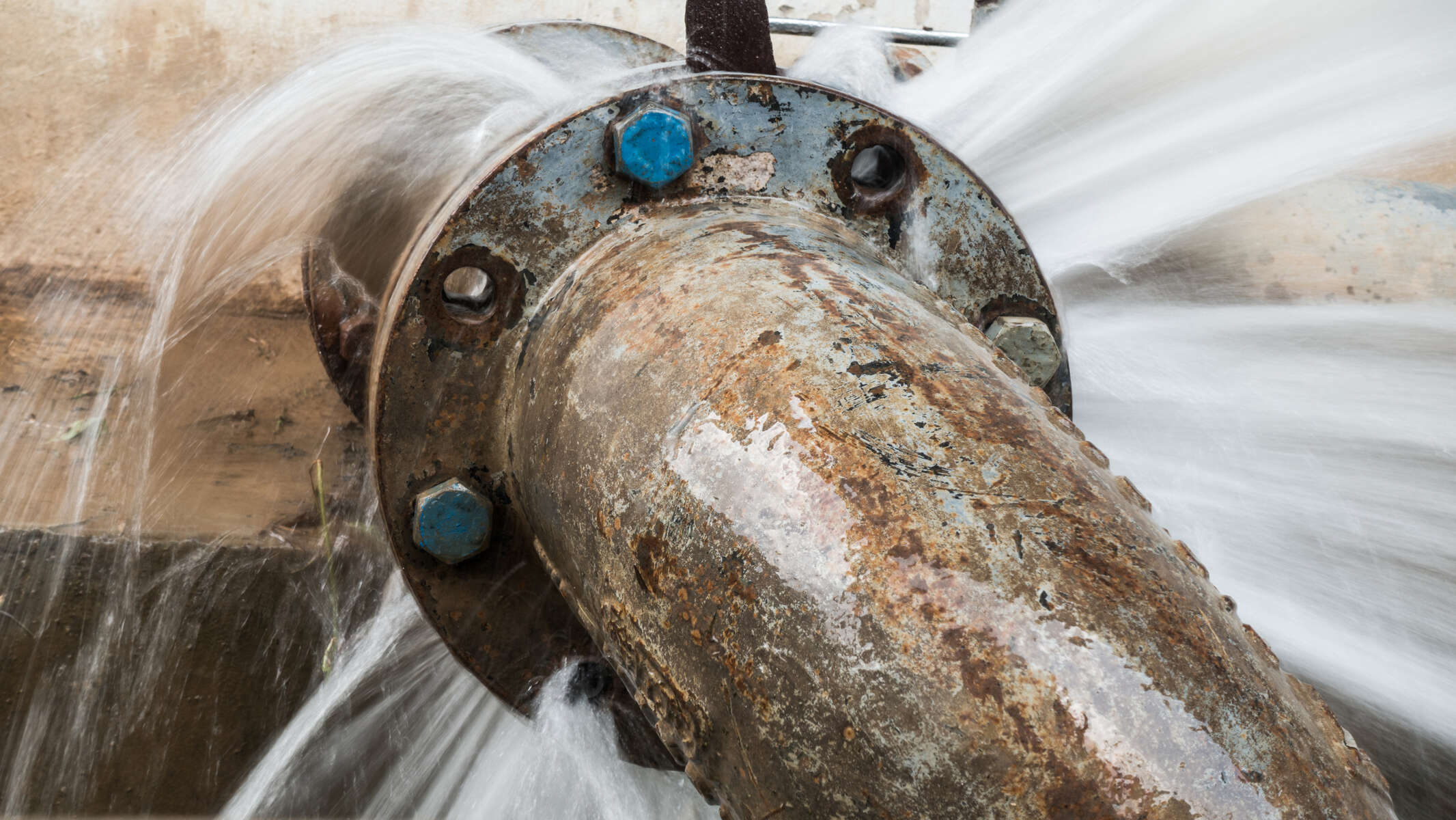
When water pipes are banging: What water hammer in the piping is all about
Hit hard: Where can water hammer occur and what causes it?
What causes water hammer?
What velocities can such pressure waves reach?
When surge pressure causes pipes to burst, damage can quickly become immense.
What influential factors are to be considered?
The closing times of the valve play a key role.
- The faster the flow in a pipe is stopped or accelerated, the stronger the pressure rise or pressure drop
- And: The faster the liquid was moving prior to its deceleration, the stronger the pressure rise or pressure drop.
Pipe material as one decisive factor for possible pressure surge damage
Pretty strong: What are the possible consequences of surge pressure?
- Pipe rupture and valve damage
- Loosening of pipe fasteners
- Damage to pumps and their foundations
- Deformation of plastic and thin-walled steel pipes
- If the pressure drops, air or contaminated water can be sucked in via flanged connections and sleeve joints, gland packings or leaking points.
- The lining of pumps (cement mortar lining, plastic) in pipes may flake off.
- Separation of the water column and macro-cavitation (separated water columns colliding or a separated water column hitting a closed valve)
Damping surge pressure: How can water hammer be prevented?
- The piping layout
- The piping length
- The pump’s moment of inertia (plus motor, coupling, pulley, etc.)
- The pipe material and dimensions
- Other important parameters are the flow rate, fluid handled and water levels.
- By using a frequency inverter a pump’s speed can be controlled precisely, providing protection against the pump stopping too quickly, for example.
- A so-called soft starter prevents excessive pressure peaks when starting up and stopping a variable speed pump.
- Opening and closing the valves correctly is another crucial factor: The slower a valve is closed, the lower the surge pressure. This can be achieved by hydraulically actuated butterfly valves, for example.
- Pressure relief valves prevent the occurrence of excess pressure in the piping. Vacuum safety valves installed downstream of the valve allow air to enter the system if necessary in order to prevent a vacuum.
- A larger diameter reduces flow velocities. This also applies to the maximum possible velocity change following abrupt deceleration.
- The pipe material markedly influences the amplitude of the wave propagation velocity.
- An accumulator contains a compressible “air cushion”. Similar to a balloon the air cushion absorbs the energy generated by a pressure increase.
Taking pressure off the piping: Summary and conclusion
Used products
KSB Guard
The smart and comprehensive monitoring service for pumps and other rotating machinery, available 24/7 and also for non-KSB pumps. Benefit from predictive maintenance with KSB: comprehensive transparency, increased availability, enhanced operating reliability and efficient operation (of fixed-speed pumps). Important operating data such as vibrations, temperature, operating hours and load condition (of fixed-speed pumps) can be accessed via KSB Guard, anytime and from anywhere. In addition, deviations from normal operation trigger immediate notifications via the KSB Guard web portal and/or app. The experts at the KSB Monitoring Centre also provide support in analysing causes.